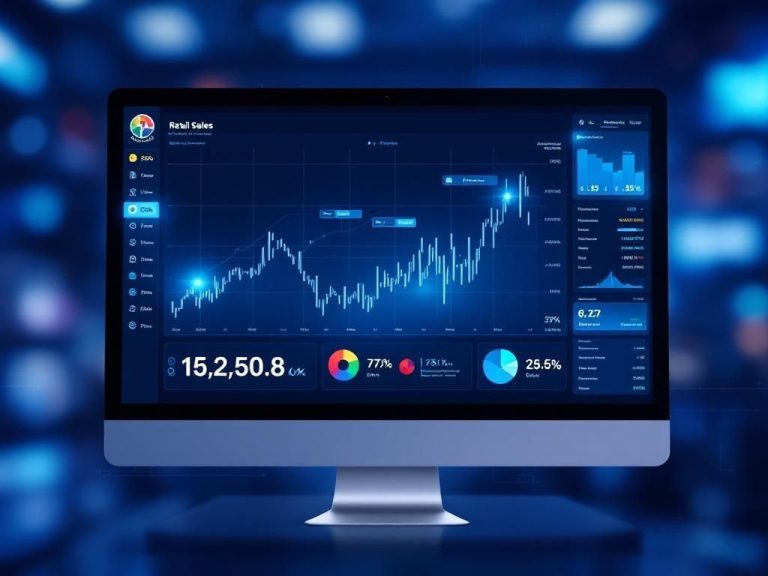In the fast-evolving landscape of retail, businesses are always on the lookout for innovative strategies to enhance customer experience and streamline operations. One of the most promising advancements in this domain is predictive analytics. As we approach 2025, the integration of predictive analytics into retail is not just a trend but a necessity for survival and growth. By leveraging data to forecast future trends, behaviors, and outcomes, retailers can make smarter decisions.
Understanding Predictive Analytics
Predictive analytics refers to the use of statistical algorithms, machine learning techniques, and data mining to analyze historical data and predict future outcomes. In retail, this can mean anything from forecasting demand to optimizing inventory levels.
The Core Components of Predictive Analytics
- Data Collection: Gathering data from various sources, including sales transactions, customer interactions, and social media.
- Data Processing: Cleaning and organizing the data to prepare it for analysis.
- Modeling: Developing algorithms that can analyze the data and generate predictions.
- Validation: Testing the model against real-world data to ensure accuracy.
- Implementation: Integrating the predictions into business operations.
Benefits of Implementing Predictive Analytics in Retail
As we look toward 2025, the advantages of predictive analytics in retail are becoming increasingly clear:
Enhanced Customer Experience
Understanding customer behavior through predictive analytics allows retailers to personalize marketing efforts, optimize product recommendations, and improve customer service.
Inventory Optimization
Predictive analytics can significantly enhance inventory management, reducing excess stock and minimizing stockouts. This can lead to:
- Reduced holding costs
- Improved cash flow
- Increased sales due to product availability
Targeted Marketing Campaigns
Retailers can utilize predictive models to identify customer segments more likely to respond to specific marketing initiatives, enabling:
- More effective advertising budgets
- Higher conversion rates
- Improved customer loyalty through personalized offers
Operational Efficiency
By forecasting demand and understanding purchasing patterns, retailers can optimize staffing levels and streamline their supply chain operations, leading to:
| Operational Area | Benefit |
|---|---|
| Staffing | Right-sizing staff during peak times |
| Supply Chain | Reducing lead times |
| Logistics | Improving delivery schedules |
Case Studies: Retailers Leading the Way
Several retailers have successfully integrated predictive analytics into their operations, paving the way for others to follow:
Walmart
Walmart has leveraged predictive analytics to optimize its pricing strategies and inventory management. By analyzing purchase data, they can forecast demand for specific items, ensuring shelves are stocked without over-purchasing.
Amazon
Amazon’s recommendation engine is a classic example of predictive analytics in action. By analyzing browsing history and previous purchases, the platform suggests products that customers are likely to buy, enhancing user experience and increasing sales.
Target
Target uses predictive analytics to tailor marketing campaigns based on customer data. Their ability to predict shopping habits has increased customer retention and boosted sales, particularly in personalized promotions.
Challenges in Implementing Predictive Analytics
While the benefits are substantial, integrating predictive analytics into retail is not without challenges:
Data Quality and Integration
Retailers often struggle with disparate data sources that can lead to inconsistencies and inaccuracies in predictions. Ensuring data quality and comprehensive integration is crucial.
Technology Investment
Investing in the right technology and tools for predictive analytics can be costly and requires careful consideration of ROI. Retailers need to assess their current infrastructure and determine what upgrades are necessary.
Skilled Workforce
There is a demand for skilled professionals who can interpret data and build predictive models. Retailers must invest in training existing staff or hiring new talent with the requisite skills.
The Future of Predictive Analytics in Retail
As we advance towards 2025, predictive analytics will continue to evolve. Key trends expected to shape the landscape include:
AI and Machine Learning
The integration of AI and machine learning will enhance predictive analytics capabilities, allowing for more complex models and greater accuracy in forecasting.
Real-Time Analytics
Retailers will increasingly focus on real-time data analysis to make immediate, informed decisions, allowing them to respond to market changes instantaneously.
Customer-Centric Approaches
Predictive analytics will pivot towards more customer-centric strategies, utilizing personal data responsibly to deliver tailored experiences at scale.
Conclusion
As we look to 2025 and beyond, predictive analytics will be a game-changer for the retail industry. Retailers who embrace this technology stand to gain a competitive edge, driving customer satisfaction and operational efficiency. The future belongs to those who can anticipate and adapt to the ever-changing landscape of consumer behavior.
FAQ
What is predictive analytics in retail?
Predictive analytics in retail refers to the use of statistical algorithms and machine learning techniques to analyze historical data and predict future outcomes, helping retailers make data-driven decisions.
How can predictive analytics benefit retail businesses?
Predictive analytics can help retail businesses optimize inventory management, enhance customer personalization, improve demand forecasting, and increase overall sales performance.
What are some examples of predictive analytics in retail?
Examples include personalized marketing campaigns, dynamic pricing strategies, inventory optimization, and customer segmentation based on purchasing behavior.
What technologies are used in predictive analytics for retail?
Technologies include machine learning algorithms, data mining techniques, big data platforms, and advanced analytics tools that process large volumes of retail data.
How can retailers prepare for predictive analytics in 2025?
Retailers can prepare by investing in data infrastructure, enhancing data collection methods, recruiting skilled data analysts, and integrating predictive analytics tools into their existing systems.
What challenges do retailers face when implementing predictive analytics?
Challenges include data quality issues, integration with existing systems, the need for skilled personnel, and ensuring data privacy and security compliance.




